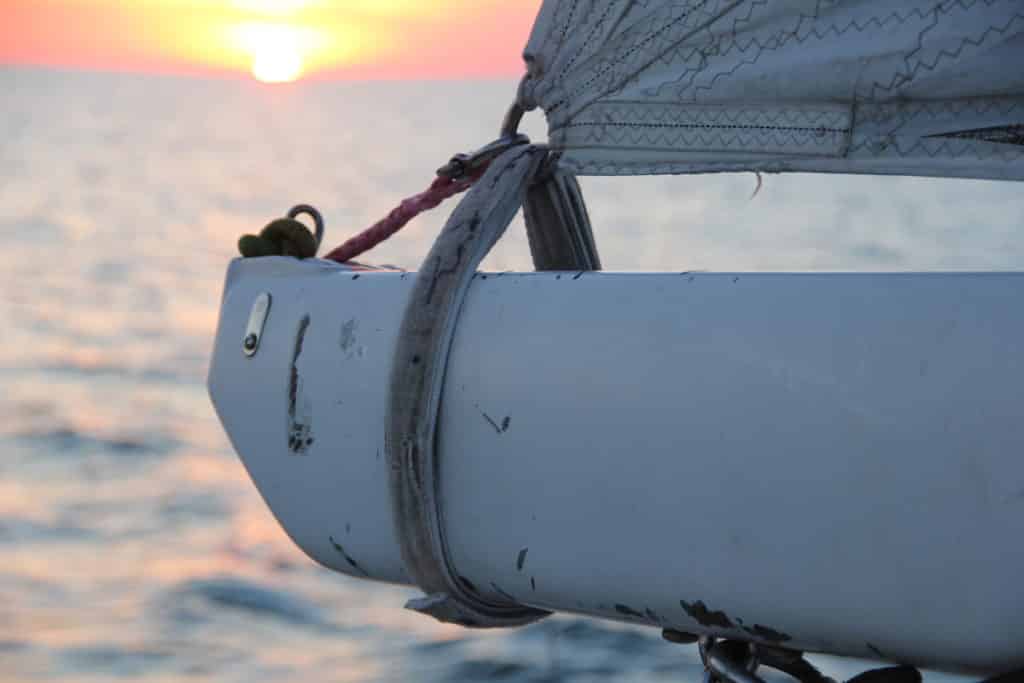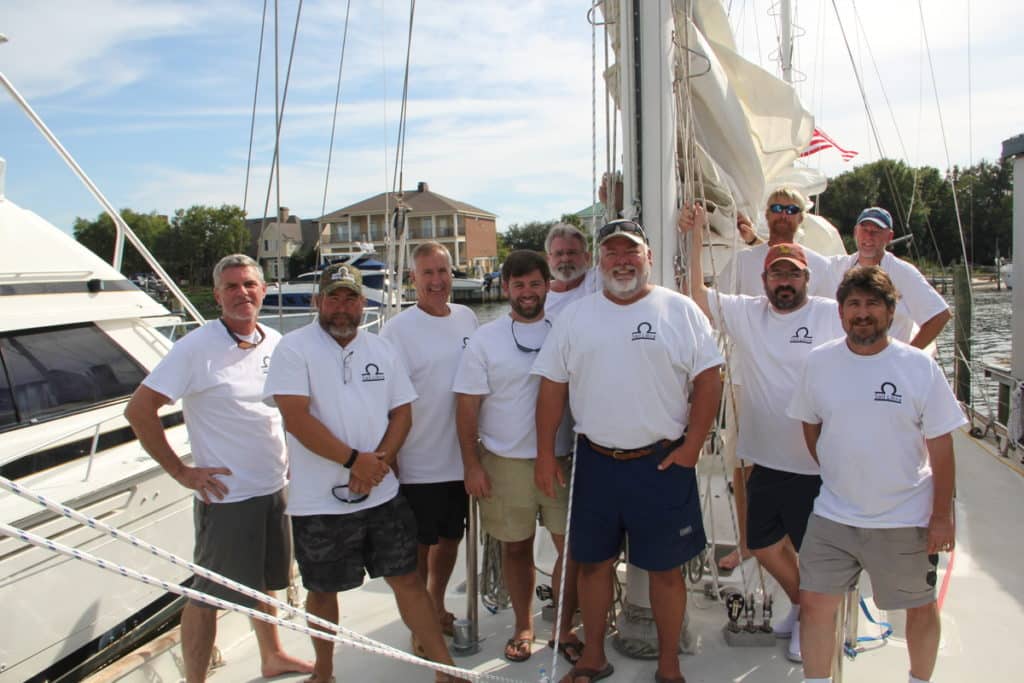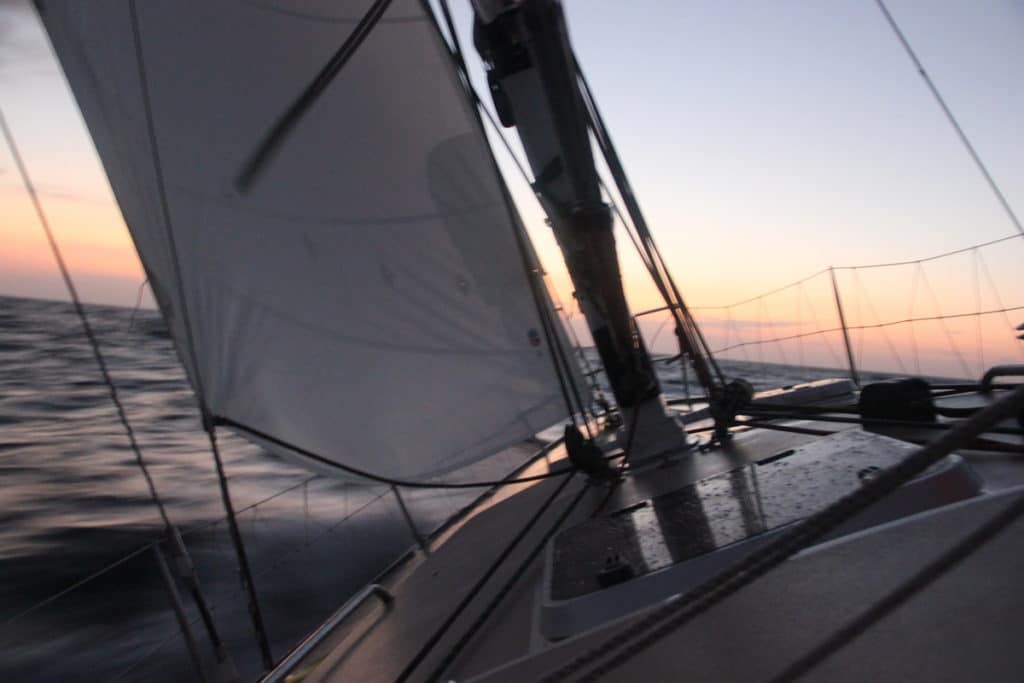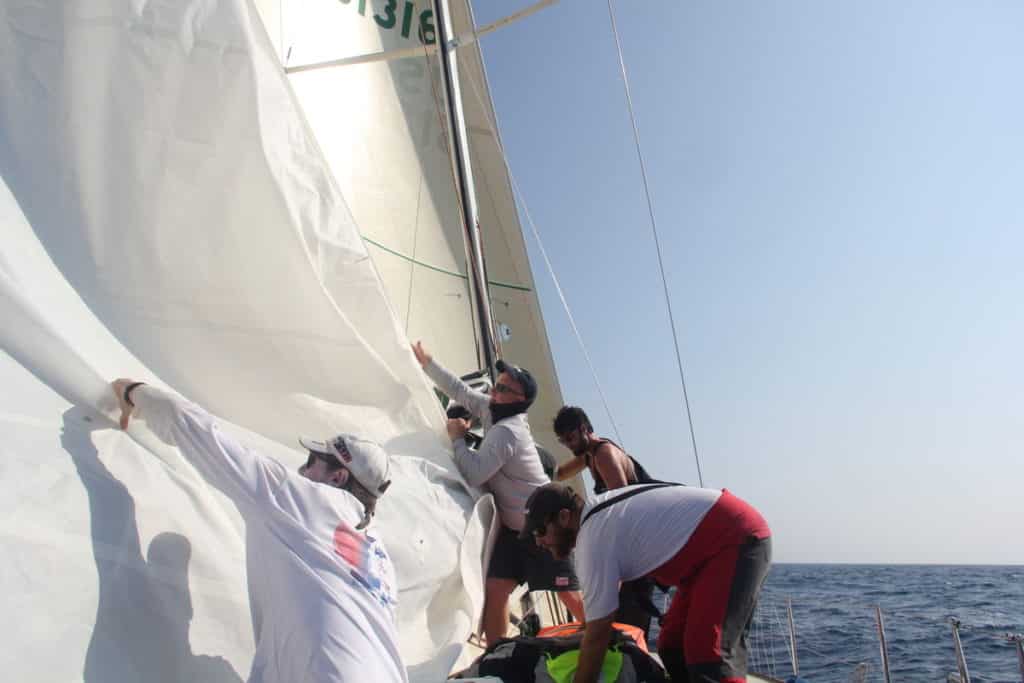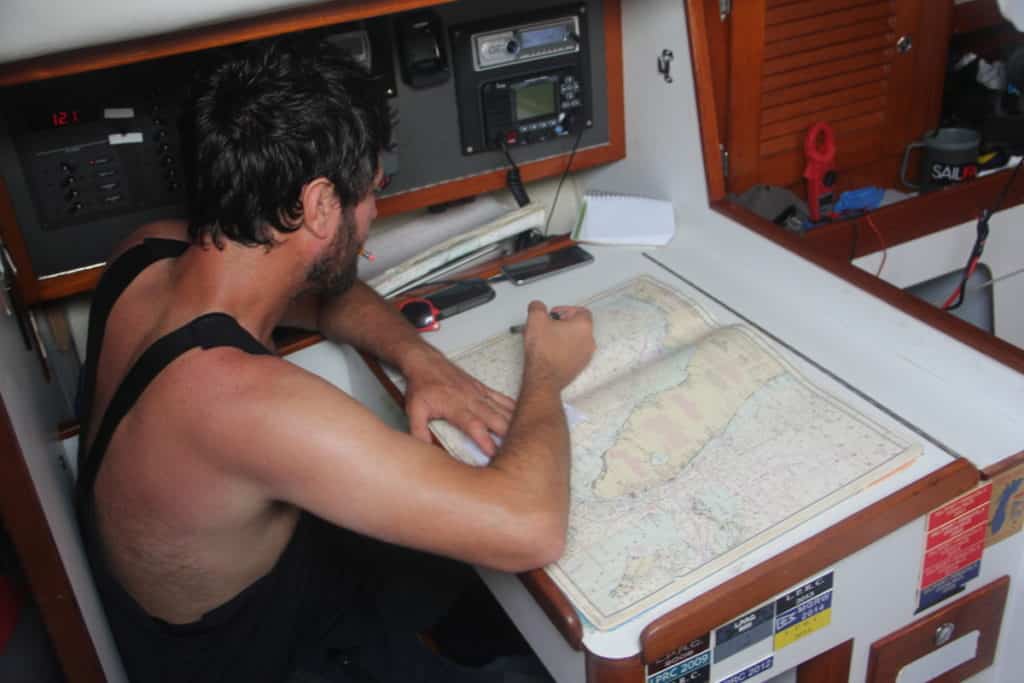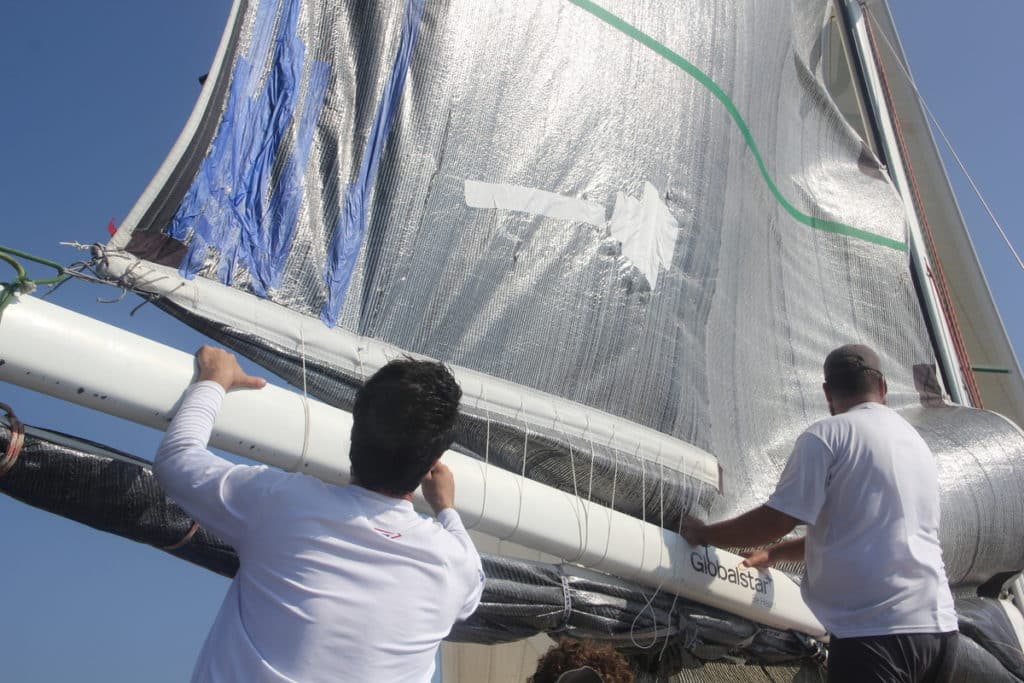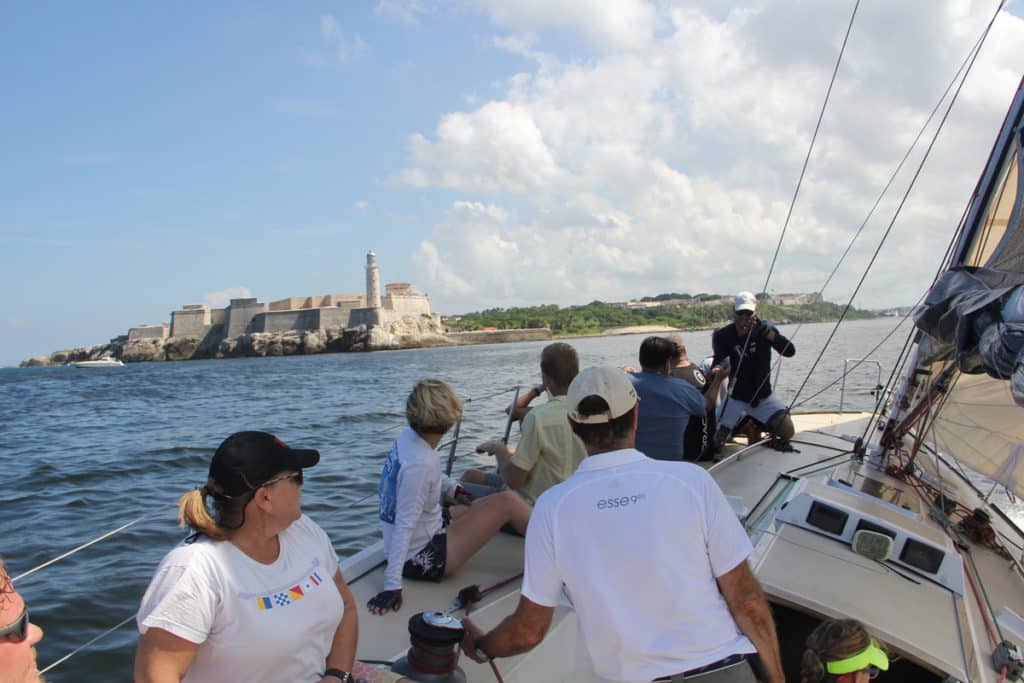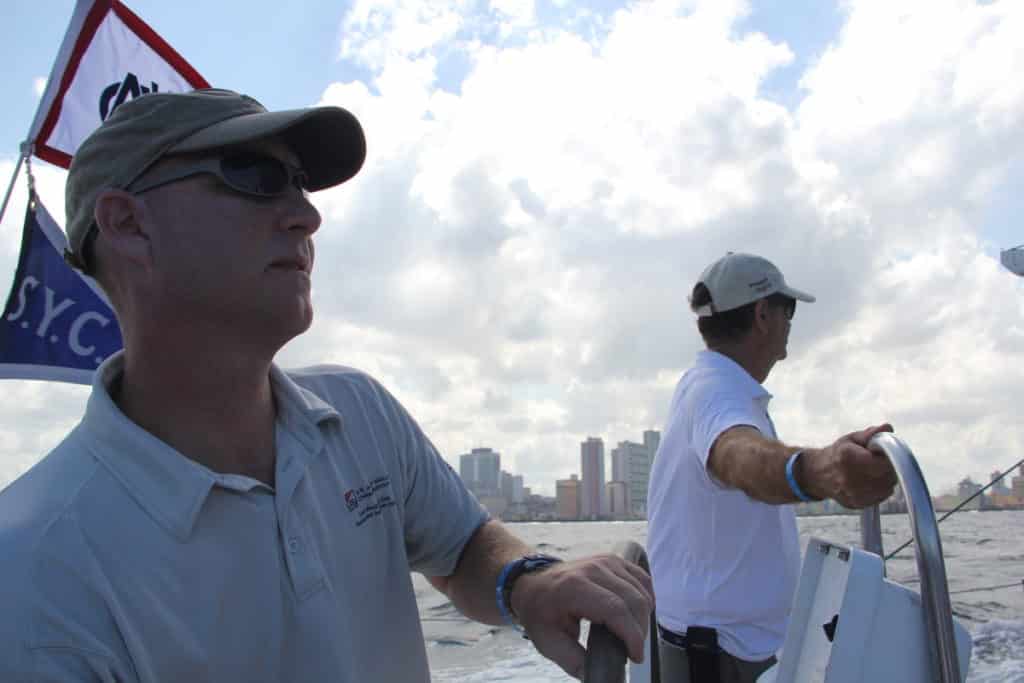The bar lore from the past Havana races runs strong at Gulf Coast YC’s, but those stories are probably best left to oral history. As L.G.Sullivan who raced on the Beneteau 381, La Gazelle, said at the fuel dock in Pensacola the evening before the start, “Right now we’ve got a great reputation in Cuba… because it’s been so long since we were down there that they’ve forgotten all about us Gulf Coast sailors.”
The reality on the water and then in Old Havana doesn’t need any embellishment over rum – when would stories of distance racing 500nm to an island nation that has been effectively isolated for five decades from Americans need a wink and a nod.
With one boat dismasted in an angry cold front, another three dropping out and our own J/130’s main exploding only 200nm south of the start after a steady 18-20 knots on the nose, the on-the-water exploits from this race are enough of a tale to fill a couple of pages of Sailing World. The only thing that didn’t happen was t-boning a decrepit Cuban diesel sub – which I would have happily written about.
Stir into that mix the hospitality of the Cuban people who were genuinely thrilled to meet American sailors on the streets of Old Havana or the lament of a cabbie in a 1957 Chevy who has never seen his hometown from the water or a fiery speech on a long lost friendship between the people of the United States and Cuba delivered by Commodore Escrich of the Heminway YC – there are adventures and then there are adventures.
I wrote this dispatch from the boat on the first evening at sea, but it was lost after our alternator failed and power onboard became scarce: “The Gulf of Mexico is truly a gorgeous expanse of tropical water and a giant loggerhead turtle was spotted earlier and a flying fish landed onboard after our dinner of New Orleans’ famous hangover cure, Yakamein. Tonight the water glows green in our starboard light, but in the morning the electric blue waters will greet us again and Cuba lies just to the south. I’m off to make a pot of coffee for the on-watch and then spend some time thinking about the long lost sunken Spanish galleons that we’ve undoubtedly already sailed over.”
What I know now as my beard has grown out and we delivered the boat back to New Orleans and were greeted by the first edges of the Gulf Coast’s winter – sailors should be the first Americans to land in Havana en masse. Before the corporations and chain coffee shops inevitably get a hold of this island, we are the ones who should see it first after arriving old school from across the sea. With eleven regattas so far scheduled in 2016, the opportunities to do so will only increase and perhaps with it the isolated Cuban patina will start to vanish forever. Cuba’s waiting and her arms are open wide – my advice is to register, line up your crew and start prepping that boat – that island will never be the same as it is now.
